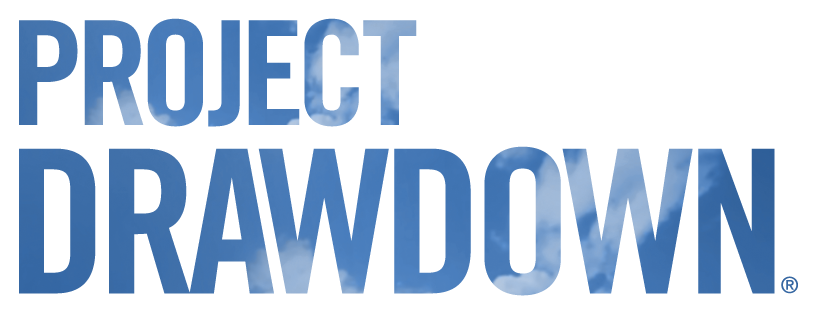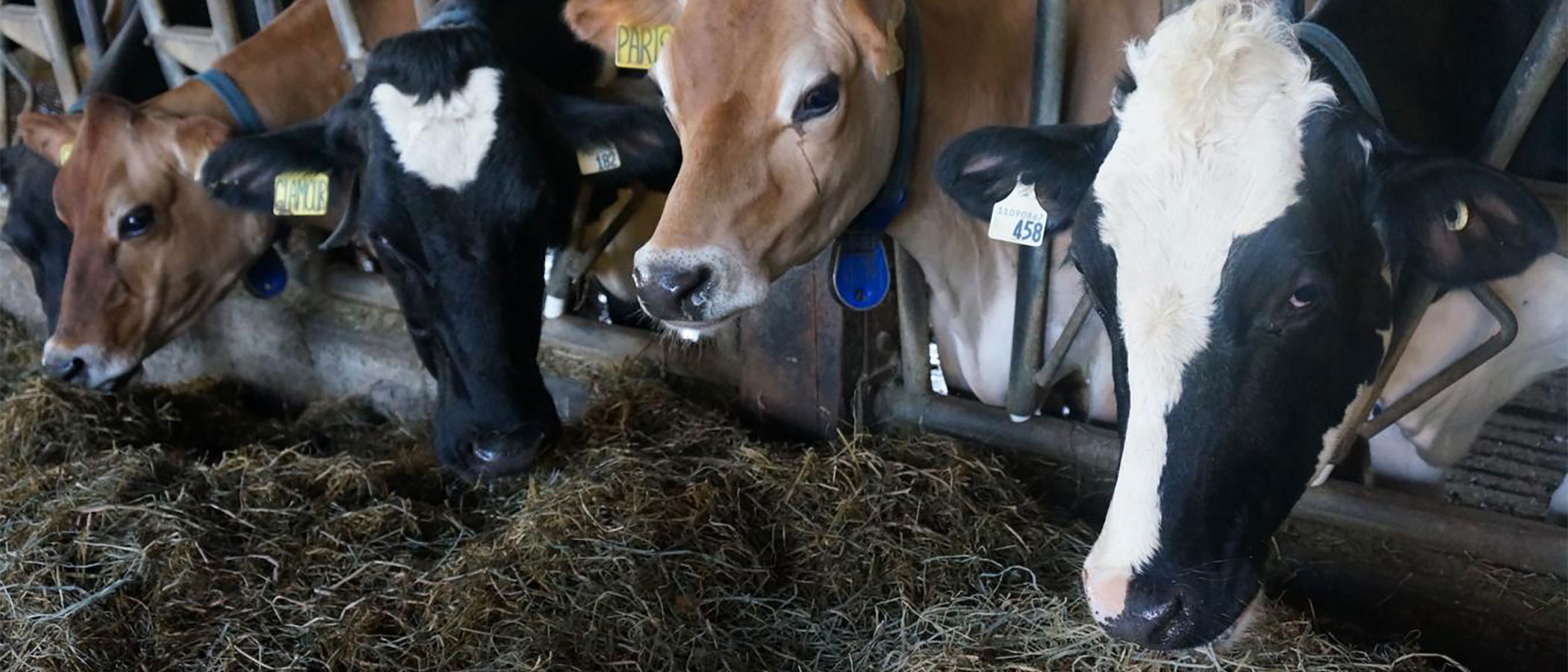Improved Cattle Feed
Optimizing cattle feeding strategies can lower the methane emissions produced within the ruminant digestive system. Nutrient enriched diets of high-quality forages, additives, and supplements aim to improve animal health and productivity.
Reduced/Sequestered
2020–2050
To Implement
Operational Savings
Impact
Improving cattle feed can reduce carbon dioxide equivalent emissions by 4.42–15.05 gigatons by 2050. This analysis factors in regional and farming system limitations in ingredient availability and feed utilization.
Introduction
Project Drawdown’s Improved Cattle Feed solution involves a set of feeding strategies that lower methane emissions by changing the composition of feed and/or nutrient intake of cattle. This solution replaces conventional low-digestible feed, such as high-fiber grasses and corn residue.
As they digest their food, cattle produce and emit methane, a potent greenhouse gas. This methane makes up 27 percent of anthropogenic methane emissions and creates a major concern for global warming (Global Methane Initiative, 2020). Without interventions, methane emissions are expected to increase as our reliance on cattle-derived products such as milk and meat escalates.
Extensive studies have identified feeding modifications as having the greatest potential to reduce emissions from cattle. High-quality forages such as legumes are low in fiber and contain highly soluble carbohydrates, making them easier to digest than conventional grasses (Le Liboux & Peyraud, 1999). Supplementing the diet with animal feed, such as maize or soy, and concentrates will ensure better animal nutrition while also reducing methane production (Satyanagalakshmi et al., 2015). Methane production can also be reduced up to 30 percent with the use of feed additives that directly affect the microbiome of the animal stomach (Melgar et al., 2021).
The feasibility of these feeding strategies will depend on the type of production system, associated costs, market availability, and localized social acceptance. If implemented, improved cattle feed quality could lead to socioeconomic co-benefits such as better food security and more income from increased animal productivity.
Methodology
Total Addressable Market
We estimate current global demand for milk and bovine meat to be 43.9 billion kilograms of protein. Current adoption of improved cattle feed quality (defined as the amount of functional demand supplied in 2014) is approximately 21 percent of this, or 9.1 billion kilograms of protein. By 2050, a rising population will increase that 31 percent to 57.6 billion kilograms of protein.
We model the total addressable market by three types of production systems: grazing, feedlots, and mixed, as well as five global socioeconomic regions. Much of the current adoption is implemented in feedlot production systems of developed nations of the world. The lowest current adoption is in grazing systems of low-income nations.
Adoption Scenarios
We calculated impacts of increased adoption of improved cattle feed quality from 2020 to 2050 by comparing two growth scenarios with a reference scenario in which the market share was fixed at current levels.
-
Scenario 1: Improved cattle feed quality yields 16.12 billion kilograms of protein in 2050, representing 28 percent of total protein produced.
-
Scenario 2: Improved cattle feed quality yields 26.05 billion kilograms of protein in 2050, representing 45 percent of total protein produced.
Emissions, Sequestration, and Yield Model
We estimated avoided methane emissions from improved cattle feed quality at 0.26 metric tons of carbon dioxide equivalent per kilogram of protein, based on meta-analysis of 114 data points from 24 sources.
We set indirect emissions (feed production, transport, processing, etc.) to 0.01 metric tons of carbon dioxide equivalent per kilogram of protein, based on a meta-analysis of 84 data points from 13 sources.
An added benefit to improved cattle feed quality is the increase in milk yield. Annual yield gains compared with business-as-usual were set at 13.3 kilograms of protein per cow, based on meta-analysis of 18 data points from seven sources. Over the 2020–2050 projection, 12,507 kilograms of milk per cow is gained.
Sequestration rates are excluded from the model.
Financial Model
All monetary values are presented in 2014 US$.
We assume there were no first costs to the reference scenario and solution because conventional crop systems for feed production were already in place and no new or replacement machinery would be required.
To calculate operating costs, we considered the cost of producing and/or purchasing animal feed. It was hard to find estimates of feed prices because commodity prices fluctuate with market conditions. In addition, feed costs are usually influenced by the total feed intake of the animal which varies with health, age, and production phase.
Based on a meta-analysis of 19 data points from the International Farm Comparison Network, we modeled conventional operating costs as US$9.48 per kilogram of protein from animal-sourced products. In comparison, we estimate operating costs for improved cattle feed quality at US$13.38 per kilogram of protein. This indicates that higher quality feedstuff is more expensive than conventional feeds.
However, the more expensive feed is offset by the additional revenue from increased milk yield. We modeled this as an increase of US$8.53 per kilogram of protein of animal-sourced product.
Integration
Adoption of the Improved Cattle Feed Quality solution will depend on the global demand for livestock products. Project Drawdown’s Family Planning and Education solution will alter the global food demand. In addition, we can expect cattle production to decrease with implementation of the Plant-Rich Diets and Reduced Food Waste solutions.
Results
Scenario 1 avoids 4.42 gigatons of carbon dioxide equivalent emissions from 2020 to 2050. The net first cost to implement is US$0, and the lifetime net operational savings are US$554.07 billion.
Scenario 2 avoids 15.05 gigatons of carbon dioxide equivalent emissions from 2020 to 2050. The net first cost to implement is US$0, and the lifetime net operational savings are US$1.88 trillion.
Discussion
Benchmarks
We estimated that implementation of the Improved Cattle Feed solution would reduce carbon dioxide equivalent emissions annually from 0.11–0.63 gigatons in 2030 and 0.24–1.42 gigatons in 2050. Benchmarks vary widely, depending on assumptions made about what feed ingredients are used and if they are used in combination with other solutions such as animal management and manure management. Overall, 11 sources estimate that carbon dioxide equivalent emissions can be reduced annually by 0.1–0.3 gigatons by 2030 and 0.01–1.72 gigatons by 2050. Our model’s calculations are in line with the benchmarks.
Limitations
In addition to greenhouse gas emissions, land degradation, nutrient runoff, and water misuse are other negative impacts that have been attributed to the meat and milk value chain. Analysis of the impact of improved cattle feed quality on these factors is beyond the scope of this study. However, implementation of responsible farming practices such as nutrient optimization, conservation tillage, cover crops, efficient grazing, and manure management is necessary to ensure a more sustainable feed source and sustainable animal-sourced products.
Conclusions
Actions taken today to reduce the livestock sector’s greenhouse gas emissions could avert negative environmental impacts while improving the quality of life for smallholder farmers. By changing the nutrient intake and composition of cattle feed, enteric methane emissions decline, animal health improves, and productivity rises. The added revenue from increased milk production will outweigh up-front costs, leading to a net profit. An additional benefit to increased productivity is fewer animals are needed to meet the demand for milk, thus reducing the pressure on land and water.
References
Global Methane Initiative (2020). Global Methane Emissions and Mitigation Opportunities.
Le Liboux, S., & Peyraud, J. L. (1999). Effect of forage particle size and feeding frequency on fermentation patterns and sites and extent of digestion in dairy cows fed mixed diets. Animal feed science and technology, 76(3-4), 297–319.
Melgar, A., Lage, C. F. A., Nedelkov, K., Räisänen, S. E., Stefenoni, H., Fetter, M. E., ... & Hristov, A. N. (2021). Enteric methane emission, milk production, and composition of dairy cows fed 3-nitrooxypropanol. Journal of dairy science, 104(1), 357–366.
Satyanagalakshmi, K., Sridhar, G. T., & Sirohi, S. K. (2015). An overview of the role of rumen methanogens in methane emission and its reduction strategies. African Journal of Biotechnology, 14(16), 1427–1438.
What You Can Do
If you use dairy products, find out who produces them and share this webpage, encouraging them to look into feed options.
Watch Climate Solutions 101 to learn how, working together, we can put the brakes on climate change.
- Expand your knowledge by exploring another Drawdown solution.



















